Transmission Repair Specialists in West Jordan, Utah
Is your vehicle experiencing transmission troubles? We're transmission repair geniuses! We guarantee we can fix your transmission and get you up and running in no time.
READ MORE -

Many people depend on their vehicle to get them from place to place such as running errands around town, going to school, and going to work. Like any other machine, a car can have problems from time to time and people might realize that they need to make repairs on their car. When they are told their car needs to be repaired, they might not be prepared for the cost. Maybe they assumed that insurance would cover all of the costs or perhaps that did not think that anything serious was wrong. The cost of these repairs can be difficult for a family to bear. They might be thinking about saving money by putting on aftermarket car parts. It is important for everyone to understand what are aftermarket car parts. People might also be asking are aftermarket car parts as good as OEM? Why not compare and contrast the two options?
OEM stands for original equipment manufacturer and people might be wondering where to buy OEM car parts. Typically, a dealership is going to work with OEM parts. These are parts that have been made both by and for the vehicle itself. They are meant to work like the original parts in the vehicle and might let the vehicle function better. Some of the other benefits of working with OEM car parts is that they are easy and simple to choose. Quality is guaranteed since they are made for the vehicle. Finally, most of these parts also come with a warranty on the parts.
On the other hand, OEM parts are also typically more expensive than their aftermarket counterparts. They are typically also more expensive since they have been made directly by the manufacturer and often are brand new.
Some people might elect to take their car to an independent dealer. Here, the dealer will be working with aftermarket parts. These parts are similar; however, they have not been made specifically for the vehicle itself. Therefore, it is important for everyone to know a little bit about aftermarket car parts. Some of the benefits of aftermarket parts is that they typically have a lower cost, thus the name aftermarket. Depending on the purpose of the parts and the vehicle, these parts actually might work a little bit better because of the variety. With more variety, there is more functionality, contributing to a wide range of quality.
Of course, this range also means there is a bit of an unknown factor. They might not work well at all. People can also be overwhelmed by the options and might not know where to start. Finally, these parts rarely come with a warranty. People take on a lot of risk by going with aftermarket car parts.
When it comes to vehicle repair, trust the professionals to do it right the first time. If your vehicle needs repairs, call Ace Auto Repair or visit our website to learn more! We are proud to provide services on cars, trucks, SUVs, and more in West Jordan and the greater Salt Lake City, UT area. We will keep you informed during the repair process and will be as honest and transparent as possible. Call us today!


Many times when someone asks how to save fuel, the first answers they get are suggestions on how to get around without a motor vehicle of their own, such as biking, walking, or using public transportation. While sometimes these suggestions are helpful, other times making these changes are too drastic of a blow on a person's lifestyle. What they really need to know is how to save gas while driving. Fortunately, there are ways that this can be achieved.
If you go to work with a headache or a cold, chances are you'll start feeling drained before the day is done. The same goes for your car. Any vehicle is going to get its best gas mileage if it is working as well as it possibly can. Automakers may advertise excellent gas mileage, but if the vehicle isn't working properly, it will use more gas just to function.
Pay attention to things like the check engine light, and make sure that the tires are staying properly inflated. Don't seek to own a vehicle with a more powerful engine than you really need. In addition to reducing fuel economy, ignoring problems also increases emissions that at harmful to the environment. Not keeping up with basic maintenance may also lead to greater repair costs in the long run.
If you're a "crazy driver" don't be surprised to see crazy bills at the pump. Aggressive driving has been known to lower fuel efficiency by close to a third.
Driving the speed limit is actually a practice that can save fuel, as fuel economy starts to dwindle past 50 mph. Too much braking and sudden acceleration can be hard on efficiency as well, as it can burn as much as a half-gallon of fuel in a single hour.
One of the biggest waves to save fuel is to make sure that when you are driving, you are moving as much as possible. That means limiting the amount of time you leave your car idling. The Department of Energy suggests not having your vehicle in the park for more than 10 seconds, if possible.
The more fully you have to start and stop at traffic lights, the more fuel you will use, and the harder you will be on your car. Coasting to slow speed before braking will make things easier. When roads are good, cruise control can be a helpful fuel-saving tool, although it is not a good option for slippery roads.
Climbing into a nice cool car on a hot day might feel good, but if you are looking to save gas money, too much air conditioning isn't necessarily the best way to go. Cooling the car by opening windows is a more fuel-efficient alternative.
There are a lot of vehicles on the market that are designed for great fuel efficiency, but how your drive and take care of your vehicle are just as important as choosing the best vehicle you can. For most people, it's all they can do to do the best they can with what they've got.
At Ace Auto in West Jordan, Utah, our team can help make sure your vehicle is working at its best. To learn more, contact us at 801-803-6016, or visit us online at AceAutoUtah.com.

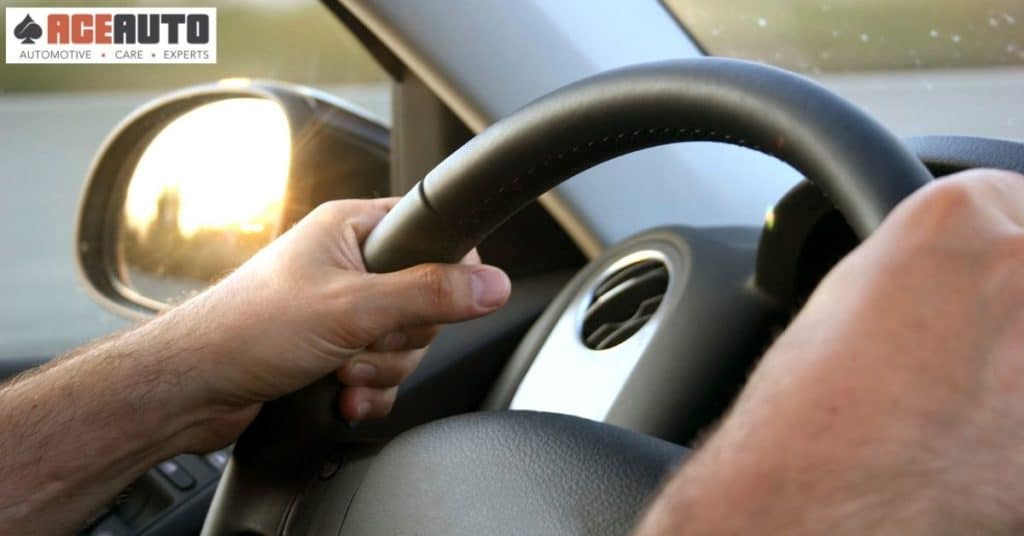
While steering problems can give you a headache, it is important to know the root of your problem. Your steering problems could be due to suspension system issues, bad tires, or other issues that have nothing to do with your steering system. But it could be the steering system, which is why it is so important to correctly diagnose the problem. It is important to fix steering issues as quickly as possible because driving with these problems can lead to an accident or an injury. If you live in Utah, visit Ace Auto in West Jordan and receive affordable service from experienced mechanics.
No matter what the cause or signs of steering problems, whether it is power steering problems or electric power steering problems, it is essential that you take your vehicle to a certified, experienced mechanic to fix the issue. Driving a car with power steering issues could lead to accident or injury. Give Utah’s trusted mechanics at Ace Auto a call today at 801-803-6016 to schedule an appointment and get a free repair quote!
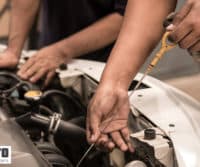
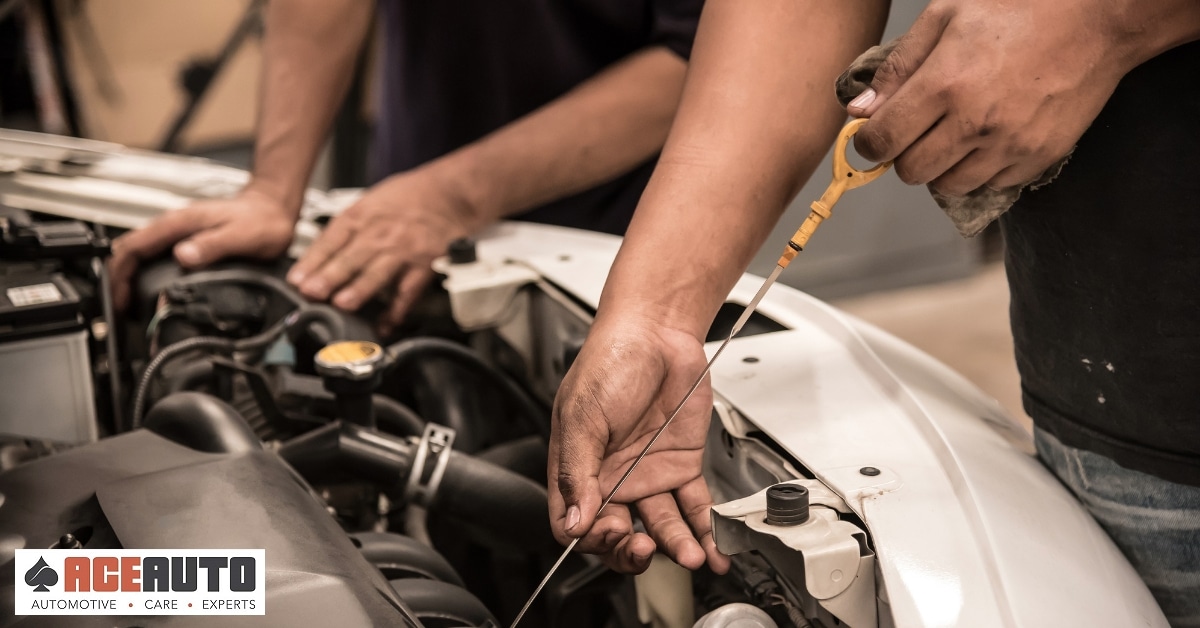
The oil in your vehicle's engine lubricates the moving parts keeping your car or truck running at its best and preventing costly repairs. But when oil reduces in volume from use and starts to break down, the engine's components can be damaged. Over time oil becomes polluted with contaminates like dust, dirt, debris and other particulates can cause a build-up of harmful sludge. Old oil will also build-up in filters and vents that can result in issues with the air flow to the engine.
One of the most important things you can do for your vehicle is to have your oil changed regularly. As a general rule of thumb, car care experts recommend changing the oil every 3,000 miles. But with technology improvements, newer vehicles might only require an oil change between 5,000 to 10,000 miles, check your owner's manual for your car's manufacturer's recommendations. Whether you have a new or old car, the importance of oil changes cannot be understated.
While you're driving the moving parts of your car's engine, like pistons and valves, move at high rates of speed. Oil helps keep the heat created by these components down and prevents wear. When the oil is low or too old, these moving parts are not properly lubricated and will create more heat with friction and over-heat the engine. The benefits of properly maintaining engine lubrication with regular oil changes include:
Whether you take your vehicle to a dealership or a local, trusted mechanic for an oil change, it is important to follow the manufacturer oil change recommendations to ensure your factory warranty coverage remains valid. Regular maintenance services are easy to keep up with compared to the costly repairs you may face if without it.
Get better gas mileage and ensure your vehicle's engine is protected with an affordable and convenient oil change by an experienced technician. To save time and money, make an online appointment with Ace Auto in West Jordan, Utah or give us a call at 801-447-1693 for an immediate service or repair quote. We are proud to offer Salt Lake City area residents complete auto repair and maintenance services.


You probably know that you should change the oil in your car every 3,000 miles, but do you know how often you should check the power steering fluid or the chassis lubrication? If you are unsure, review your car's owner manual to find the factory maintenance schedule recommended for your specific vehicle by the manufacturer. So, what is factory scheduled maintenance and why is it important for your vehicle?
Your vehicle's factory scheduled maintenance is a reminder to have your vehicle serviced every 3 months or 3,000 miles for preventative maintenance throughout the year. These manufacturers recommendations will keep your car running smoothly, help prevent costly repairs and ensure your manufacturer’s warranty remains valid.
Whether you take your car to the dealership or your local mechanic for scheduled maintenance, it is important to stick with the factory recommendations to make sure that coverage is valid throughout the duration of your factory warranty. Services like rotating tires, flushing the brakes and changing fluids, filters and spark plugs are all easy to keep up with compared to the potential repairs you may face if without regular maintenance.
You will find two different maintenance schedules in your owner’s manual, one labeled 'regular' and the other 'severe'. While you may not put a lot of miles on your car driving to and from work or getting the kids to school, soccer practice or piano lessons - you will want to consider the following strenuous conditions that can bump your service schedule up to 'severe':
If have an older vehicle that did not come with a manual, the Car Care Council, a non-profit organization for vehicle owners, offers a free customizable vehicle maintenance schedule to help you keep track of the dates and mileage for services performed.
|
Every 3 Months/3,000 Miles |
Every 6 Months/6,000 Miles |
|
|
|
|
|
|
|
|
|
|
|
|
|
|
|
|
|
|
|
|
|
|
|
|
|
|
|
|
|
Every 9 Months/9,000 Miles |
Every 6 Months/6,000 Miles |
|
|
|
|
|
|
|
|
|
|
|
|
|
|
|
|
|
|
|
|
|
Tire Condition (inflation & tread) |
|
|
|
|
|
|
|
|
|
It is important to keep records of your vehicle's maintenance in case you need to use your manufacturer’s warranty. By logging all completed services, service dates and mileage at the time of service, you can help your mechanic understand what needs to be done to keep your car safe.
For your vehicle's regularly scheduled factory recommended maintenance, call Ace Auto at 801-447-1693. Our friendly, experienced technicians will make sure your car is safe and in good repair to prevent time-consuming, costly problems in the future.


During the hot summer months in Utah you want your vehicle's AC to blow cool refreshing air for your comfort and the comfort of your passengers. There are a variety of reasons why your car AC is not blowing cold air. Fixing the AC could be as simple as recharging your car's AC refrigerant or repairing a refrigerant leak but may also require complex electrical climate control repair or slipping compressor clutch to get your air conditioning operating at top performance once again.
The air conditioning system in your vehicle can be complex due to the location of the hoses and lines. Essentially, your vehicle's AC system compresses and heats the refrigerant, then allowing it to decompress and condense into a liquid that causes it to rapidly lose heat. This process absorbs heat from the car's cabin and is continuously repeated to achieve your desired temperature.
The basic concept is much easier to understand when the components are broken down, as follows:
Just about every car has the same basic AC parts consisting of a compressor, condenser and evaporator that work together to keep you cool during the warm summer months. When any of these parts fail, you're left with uncomfortable heat that a rolled-down window just can't fix.
Here are the top 3 reasons why your car AC may not be blowing cold air:
The most common cause of a vehicle's air conditioner not getting cold enough is that it needs to be recharged. You can recharge your refrigerant by yourself, but to save time and make sure the job is done correctly you should make an appointment with your local professional auto shop.
The trusted professionals at Ace Auto in West Jordan, Utah can help you recharge your car's AC system. Give us a call at 801-447-1693 for a free quote to get you back on the road with the comfort and safety with a recharged AC blowing crisp, cool air again.
When your vehicle's AC system develops a refrigerant fluid leak it can be challenging to detect due to the fact that refrigerant fluid instantly evaporates when it comes in contact with air. A professional mechanic uses specialized tools to determine if there is a leak by introducing ultraviolet fluid to show signs of low refrigerant pressure in the AC system. Signs of an AC system refrigerant leak:
A refrigerant leak repair may include repairing or replacing the specific failing component. If a large amount of fluid has been lost, your AC system will need to be flushed and the refrigerant fluid will need to be replaced to function properly and get the cool air flowing. *Please note that refrigerant is a very harmful toxic chemical and should not be handled without the proper equipment operated by a trained professional.
Another common source of trouble in your car's AC system might be the fan(s) motor located at the front of the vehicle's motor. Whether your car has one or two fans, it is important that the fan is in good working order to both keep you cool and to provide vital cooling to your engine.
If you are unsure about the correct diagnosis of your car's failing air conditioner, the friendly and caring certified mechanics at Ace Auto in West Jordan, Utah will give you a free repair quote and work quickly to fix your AC and get you back out on the road.
If your car ac unit is not blowing cold enough air in Utah , contact the ASE certified auto mechanics at Ace Auto in West Jordan Utah to quickly inspect and repair your AC unit. For an honest AC diagnosis and speedy repairs in West Jordan, schedule an AC repair appointment at Ace Auto or call 801-447-1693 for a FREE repair quote. Our ASE Certified master mechanics are experienced technicians that are certified and can repair any AC system problem and have your AC working properly again.
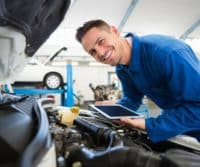
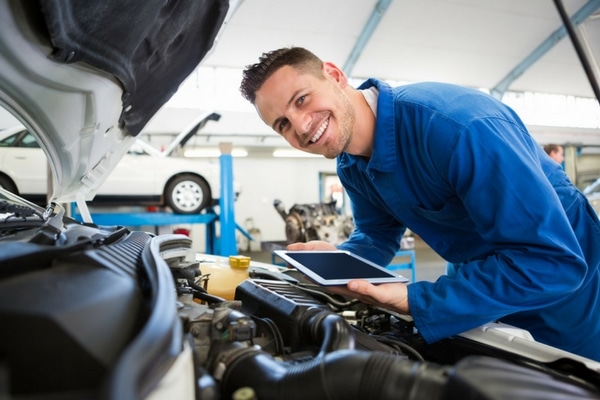
Are you burning through tanks of gas faster than you used to? Finding it harder to speed up to get around the nice old lady going 35mph on the highway? Having issues with your engine sputtering when you slow down? When was the last time you had your fuel injectors looked at? Keeping your fuel injection system well-maintained is one of the keys to better fuel performance for your car and a longer life for your engine.
Your car’s fuel injection system consists of two primary parts: the fuel injectors and the fuel pump. The fuel pump sends pressurized fuel from the gas tank to the car’s engine bay. The injectors then distribute the fuel to different cylinders within the engine as a fine spray. Your spark plugs ignite the spray from the injectors, powering your car.
Computers control modern fuel injection systems, replacing the manual carburetors found in most cars built before 1990. Carburetors required time to warm-up before the car was ready to drive. Modern systems improve upon this performance by allowing cars to start up right away without needing this warm-up period, even in cold weather.
Fuel injection systems also improve the fuel efficiency of your car. A well-maintained system limits the amount of gas needed to power the car, giving you better mileage for every tank of gas. They also make less noise than old carburetor-powered engines and lead to less engine maintenance as your car parts last longer in this type of system.
There are two primary ways to clean and maintain fuel injection systems:
These are a less-intensive way of cleaning injection systems. Nothing is taken apart or removed; instead, cleaners are introduced to remove contaminants from the system.
The injectors get removed from your car entirely and cleaned with special ultrasonic tools. They’re then tested to ensure that the flow rate and spray pattern are within acceptable limits. Technicians also check for possible leaks before putting the injectors back into your car.
You suck in dirt and other contaminants every time you drive your car. Over time, those contaminants get into your engine. When too much of it gets pulled into your injector and fuel pump, your car begins experiencing problems including:
Continued failure to maintain your car’s fuel injection system often leads to major damage to your engine, costing you a lot of money in repairs.
Think you might have an issue with your car’s fuel injection system? Contact Ace Auto in West Jordan, Utah today and schedule a review of your injection system. We’ll make sure your engine runs as efficiently as possible. Give our master mechanics a call today at 801-447-1693 for a free quote on your next service!


Your vehicle's mileage is the best indicator a new timing belt is needed. Most of us don't even think about it until there's a problem, but there are warning signs for a bad timing belt that you shouldn't ignore. Most commonly you will notice symptoms while trying to start your car or if it's making funny noises and acting-up while running. Since vehicle manufacturers provide specific mileage for timing belt replacement, and prevention is the best solution. If you already suspect your car needs a new timing belt, have it checked before time runs out.
Because the timing belt is responsible for turning your engine's cam and crankshaft in sync, it is subject to incredible exertion and typically needs to be replaced within 60,000 - 100,000 miles, depending on the manufacturer's recommendation. Check your owner's manual for exact mileage recommendations on your specific vehicle. There are only a few warning indicators that can help you diagnose a weak or loose timing belt, but there are no obvious clues to indicate a worn belt that may be close to snapping.
Since the timing belt is absolutely essential to the safe operation of your vehicle, please have an experienced mechanic inspect it if you think something is wrong. Listed below are five signs to be aware of that may help determine if it's about time to replace your timing belt:
If you're not sure about your timing belt or if you think there may be a problem, let our expert mechanics at Ace Auto Repair in West Jordan, Utah check things out for you. Don’t let time run out, contact us today for a FREE Repair Quote.
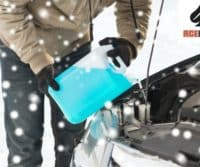

When is it time to get your anti-freeze flushed? If you're a new car owner, perhaps you don't know what an anti-freeze flush is. Let me explain. An anti-freeze flush is the same as a cooling system flush, and it really is good for your vehicle. It removes rust, dirt, sludge, and dirty coolant from your radiator, water hoses, water pump, and all your engine's cooling passages. And, of course, a coolant flush is helpful, too. It's a flush that adds cleaner to the coolant system, in order to remove sediment and rust. Then, the system is flushed thoroughly, and new anti-freeze is added to your car.
Coolant, a 50/50 mix of anti-freeze and water, flushes out your car's cooling system and is definitely part of a regular maintenance for your car. It prevents your engine from getting too hot. This, in turn, means you won't be sitting on the edge of the road waiting for a tow truck! If you only drain your radiator or fill it, you won't be getting to the crux of the problem, though. You'll definitely need to do a complete flush to get to the core of your problem, and this is necessary to prevent your car from getting way too hot and breaking down on you.
Anti-freeze is a product that flows through your coolant system and keeps your engine and cooling services in your car at the right temperature. If your anti-freeze gets too low or too dirty, it can be one of the main overheating engine causes, which is just about the last thing you want. If your engine overheats in today's world, it's sure to lead to a huge meltdown, and you're sure to have to spend your hard-earned money on expensive repairs to get your car back to normal. If your coolant isn't changed regularly, there will be several signs that you can look for, to make sure you get your coolant checked out:
If you notice any of these things, it's super-important to get your anti-freeze flushed, or at least come have your vehicle checked out by one of our mechanics at Ace Auto Repair in West Jordan Utah. You want to make sure you avoid, at all costs, the meltdown that can occur when your coolant levels get dirty or low. You will save yourself money if you get your coolant checked and refreshed regularly, and you're sure to avoid the same kinds of things that you hear about from folks you know who've spent ALL their money repairing their vehicle.
If you're wondering, just by chance, how often you need to change your anti-freeze, here are some tips. If you have the owner's manual to your car, you can start by looking at it, but sometimes, the easiest thing to do is just to check under your hood and look at your coolant levels. You can easily see if you need to get more coolant. If your coolant levels are less than desirable, it will look brown and a lot less clear. If your coolant levels are desperate level, then it will be really sludgy. You'll know then that you need to change it as soon as you can, and getting a coolant system flush is by far the best way to go to make sure your vehicle is ready to be up and running safely again.
At Ace Auto Repair, we have been rated the #1 auto mechanic in West Jordan Utah and would love to take care of your coolant flush for you.
If your car is showing signs of needing the Anti-Freeze flushed, stop by Ace Auto Repair in West Jordan, Utah for a free repair quote. Feel free to give us a call at (801) 803-6016 for any questions!
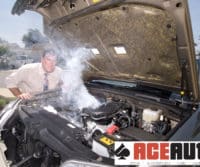

There's nothing worse than driving down the road and having your car overheat. Seeing steam coming from under the hood while red warning lights start to flash on your dashboard can get any driver's blood pumping. That's why it's a good idea to know why your car can overheat and what to do when and if it does.
There are many reasons your car may overheat. When your car overheats, it means that something is making it difficult for your vehicle's cooling system to do its job. Here are three of the most common overheating engine causes:
Regardless of your engine overheating reasons, once it does, you need to take a few steps to ensure your safety and to keep your car from suffering additional damage.

From overheated engines to engine rebuilds and even AC recharging, here at Ace Auto Repair Utah, we can handle any vehicle repairs you may need. Our team of trained professionals makes it their mission to get you and your vehicle back on the road as soon as possible. So, if you are in the Salt Lake City area, know that we can service any make or model car or truck, and we're here to help. Give Ace Auto Repair in West Jordan a call today at: (801) 803-6016 if you need your car or truck towed, or contact us to schedule an appointment.
Recent Comments